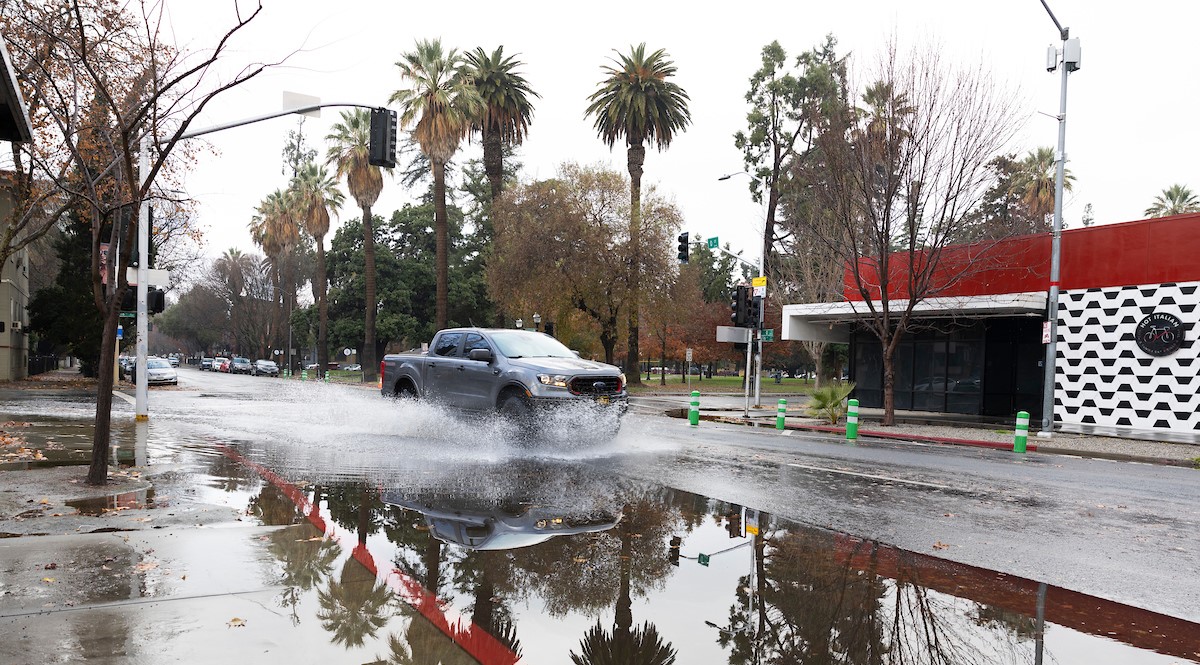

Rain falls in Sacramento Monday morning. Photo taken December 19 , 2023. Andrew Nixon / California Department of Water Resources
The Pacific Institute, a US-based global water think tank, in partnership with 2NDNATURE today released a new national assessment finding substantial opportunities for expanded stormwater capture and use approaches to improve water resilience in urban areas across the United States. The pivotal study quantifies the volumetric potential of stormwater runoff in urban areas, finding 59.5 million acre-feet per year (AFY) of urban stormwater runoff is generated, exceeding earlier estimates. This is equivalent to an annual average of more than 53 billion gallons per day.
The report, entitled “Untapped Potential: An Assessment of Urban Stormwater Runoff in the United States,” was developed using a spatially distributed modeling approach from 2NDNATURE to fill a gap in comprehensive national data. The analysis concludes that urban stormwater capture is currently underutilized. It also finds that greater uptake of this strategy could improve water resilience by mitigating impacts on communities from intensifying flooding and drought driven by climate change, diversifying water supplies to address water scarcity risks, and reducing water pollution. While the findings are specific to the United States, insights from the assessment can inform water resilience strategies globally.
“The numbers are clear. It’s time to elevate the role of stormwater capture in the national water conversation,” said Dr. Bruk Berhanu, Senior Researcher at the Pacific Institute and lead author of the report. “Urban communities across the country are grappling with water scarcity risks, more severe and frequent flooding and drought due to climate change, and constraints on traditional water supplies. There is vast opportunity for stormwater capture strategies to help solve many of these challenges, enhancing overall water resilience.”
The Pacific Institute will host a webinar to discuss the report’s results and recommendations on March 19, 2024. Register here.
Key findings of the analysis include:
Stormwater capture strategies include a diverse range of approaches that can be pursued at a variety of scales. Applications include traditional grey infrastructure, such as storm sewers that route stormwater to treatment plants for reuse and storage ponds for […]
Full article: mavensnotebook.com
Clean water is essential for life, yet millions of Americans unknowingly consume contaminants through their…
Human brains contain higher concentrations of microplastics than other organs, according to a new study, and the…
From the Office of the Governor: In anticipation of a multi-day, significant atmospheric river in Northern California,…
From Governor Newsom: Scientists, water managers, state leaders, and experts throughout the state are calling…
Photo: A harmful algal bloom in Milford Lake, Kansas, made the water appear bright green.…
An expanded plastic foam coffee cup is at a donut shop in Monterey Park, California.…